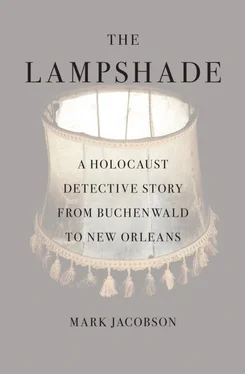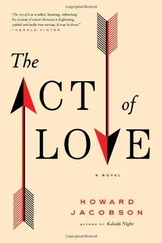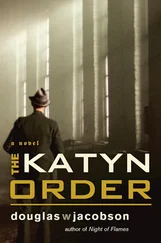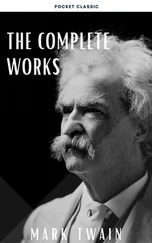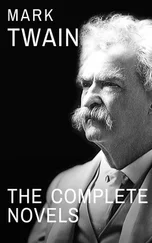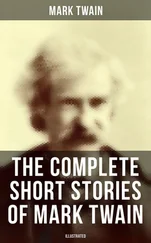“How can I explain?” Knigge said, cursing his English. “You say the lampshade is a story, and I would agree, but what kind of story do you want to tell? When I first came here, there was nothing that could be depended upon to be the truth. When the GDR decided they wanted to memorialize the camp, the first thing they did was tear the place down and reconstruct it in the image of what the state wanted it to be. This wasn’t Auschwitz, not a death camp, so it was important to make Buchenwald more horrible, more bloody, because the GDR wanted to tell the story of the antifascist heroes, what in German is called Heldengeschichten .
“But now the GDR is gone, the Cold War is gone, and so are these stories. What are we left with? We have what the survivors tell us, and we have the objects. For us it is daily life to be confronted by objects which we know to be part of the concentration camp but in most ways remain silent. Did the Nazis shrink heads at Buchenwald? We have evidence that they did. Did Ilse Koch conspire to make lampshades out of human beings? We cannot be sure. We keep trying to find out because by confronting these atrocities, we hope that it will change the minds of people and, in a way, perhaps make the world a better place. So now we are in a different situation because you have this lampshade that is made of human skin. This mythic object that is suddenly real. And because it exists, there are new questions to ask. We may never get an answer, but we continue to ask. That is why it is too early to bury this lampshade. It is still asking questions.”
Knigge acknowledged that the lampshade held for him a personal “fascination.” Myth or reality, reality and myth, the lampshade was inextricably tied to the history of Buchenwald. For many people, it was all they knew of the camp. There was no tossing it out of the narrative here. If I wanted, he suggested, I could ship the lampshade from Brooklyn to the Ettersberg. Some further scientific investigation could be arranged. Funds for this purpose were in the memorial budget.
This was the best offer I’d heard. So, yes, I told Volkhard Knigge, strange as it sounded, perhaps it was a good idea for the lampshade to come to Buchenwald. But I couldn’t ship it. I couldn’t take that chance. I’d have to bring it myself.
Some of Knigge’s unanswered questions came up as soon as I left the Ettersberg and traveled two hundred kilometers east to Dresden. The very next day was the sixty-fourth anniversary of the February 13, 1945, firebombing during which Allied aircraft destroyed the previously untouched city, considered by many to be the most beautiful in Europe, the baroque “Florence on the Elbe.”
Like most Americans, most everything I knew about Dresden came from Kurt Vonnegut’s book Slaughterhouse-Five, the odd tale of Billy Pilgrim, the optometrist of Ilium, New York, who, after being captured by the Nazis in the Battle of the Bulge, is sent to work in a Dresden slaughterhouse. Surviving the attack by hiding in a meat locker, Billy emerges to a ruined world, the shock of which causes him to be “unstuck in time,” a mystic state that enables him to travel to various periods of his life and eventually leads to communication with the extraterrestrial Tralfamadorians, a race of mostly all-knowing two-foot-tall aliens Vonnegut describes as looking like upside-down toilet plungers. It is from the Tralfamadorians that the eternally traumatized Billy learns that time, which includes life and death, is basically subjective, part of an unbroken continuum, any segment of which can be revisited over and over again.
I always liked Slaughterhouse-Five, a perfect book for the smart fourteen-year-old, for the way it breaks through the usual jingoist stuff about which side you were on and in its own fabulist way attacks the human condition of killing other humans, even Germans. Few books rail against the finality of death with such passionate invention. The fact that it is based on Vonnegut’s own experience as a witness to the Dresden firebombing (Billy Pilgrim is the author, up to a point) only deepens the reader’s appreciation for the work.
Yet to be present in Dresden on the anniversary of the bombing, with the church bells ringing at 9:45 p.m., the moment the RAF wing commanders in their Lancasters and Mosquitoes began the attack, is to be confronted by unsettling events that Vonnegut couldn’t have foreseen when his book was published in 1969.
On the Ammonstrasse, the Nazis were marching. In fact, these members of Germany’s more visible ultraright wing have been marching in Dresden on the anniversary of the bombing since reunification. For them, the Allied firebombing of the city during which untold thousands of civilians were incinerated in their wood-frame houses—Vonnegut, using figures cited by the then not-so-controversial David Irving, placed the death toll at 130,000; most historians now estimate the dead at 20,000 to 40,000—was nothing less than Massenmord, mass murder, a Bombenholocaust on a par with anything that happened to the Jews.
Dresden, capital of Saxony, hometown of Ilse Koch, has always been a right-wing stronghold. The NSDAP was dominant here and the present-day hard-right NPD, the Nationaldemokratische Partei Deutschlands, also does well, outpolling the old-line left-of-center Social Democrats (SPD) in local parliament races. This local sentiment, along with the ongoing controversy over the attack, which many regard as an unnecessary act of revenge on the part of the Allies (during the GDR it was presented as an instance of Anglo-American imperialism), has turned the bombing anniversary into a rallying point for the nationalist movement in present-day Germany. With each passing year the demonstration has grown. The night I arrived there were several thousand in the streets, taking part in a silent torchlight procession. It was part of the largest such gathering in Germany since the end of World War II.
Deep into my second year on the lampshade beat, I had a more nuanced critique on the German right wing than during my early visit to Weimar, when I couldn’t tell the difference between an antifa and an anti-antifa. The people walking down the Ammonstrasse in silence with their candles and signs in Reich typeface about how the Heimat (homeland) was reduced to schutt und asche (dirt and ash) by the verbrecher (criminal) Allies were the Kameradschaften, the “Society of Comrades.” These were the mostly young, often violent “autonomous” nationalists who took their inspiration not from the “führer model” of Hitlerism but rather from the brothers Strasser, Otto and Gregor, the intellectualized, ultranationalist racialists who broke from the NSDAP in the early 1930s to follow their own doomed, anticapitalist path to German hegemony.
Not content to fall in line with the dreary old farts of the top-down NPD and their tired Reich-nostalgic rhetoric, the Kameradschaften were anarchist, antiglobalist, kaffiyeh-wearing neo-Nazis, mostly East German youth who understood the duplicitous ways of the overlords and believed the true threat to the purity of the Volk lay not with the Jews in the classic “bacillus” sense of their mere existence but rather with the ever-encroaching modern world—that bastardized, one-size-fits-all-consumerist, Internet-addicted culture with no moral or physical barriers, where everything was for sale, including blood and honor. The new enemy was not the Jew himself but rather the identity-free, self-perpetuating quicksand of existence that at its core was Jewish, whether individual Jews like myself, paying off their credit cards at 30 percent like any oppressed Gentile, knew it or not.
Yet what was one to do as the young flag-wavers passed by, Wagner music blaring from the DJ speakers? Point out that many military historians think the Dresden attack was actually the correct decision, given the city’s industrial capacity, which included vast factories of slave workers manufacturing bombsights for the Luftwaffe? Was it the time to split hairs over where “legitimate” wartime destruction ends and criminality, even genocide begins? The fact remained that people had been killed here, burned to nothingness, leaving no trace by which scientists could run the DNA to see if they were members of the Nazi Party or not. As Yehuda Bauer had told me, in such matters “dead was dead.”
Читать дальше
